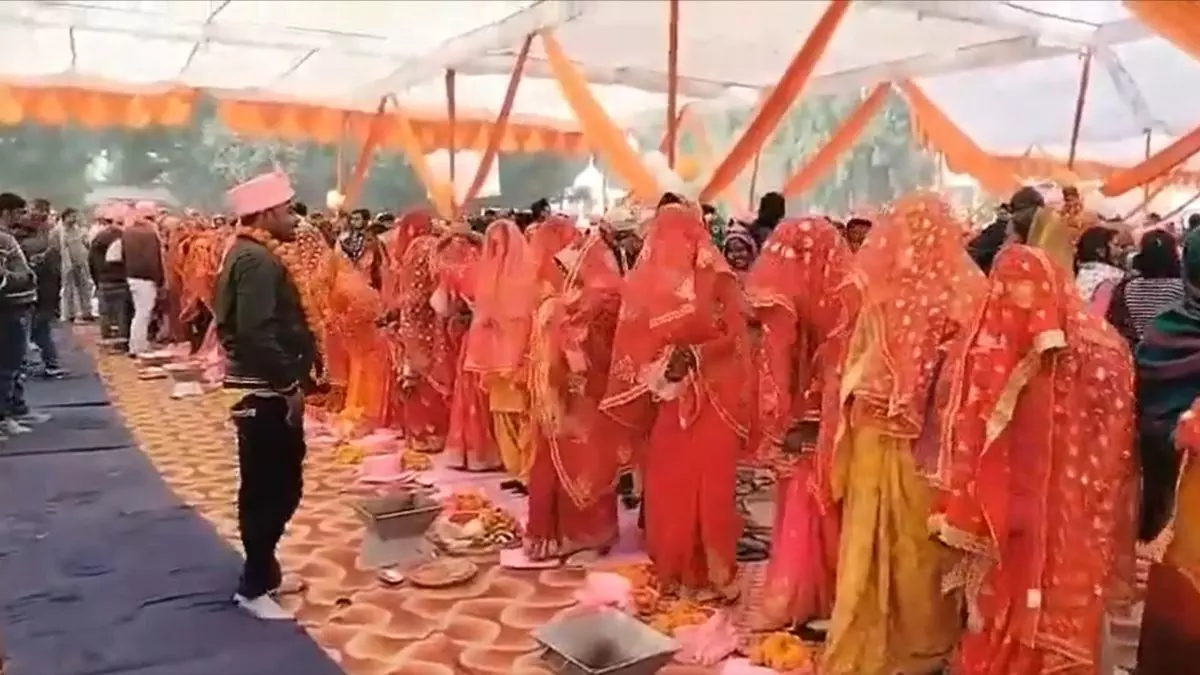Glaring loopholes

The curious case of fake marriages in Ballia District of Uttar Pradesh serves as a gross reflection of the loopholes in implementation of government welfare schemes. The journey from announcement of schemes to their on-ground implementation has always been bumpy and dotted with numerous leakages. Benefits, from those of housing schemes to PDS, often fail to reach the intended beneficiaries — leading to widespread corruption and drain of public money.
The Chief Minister Mass Marriage Scheme in UP, which is a social welfare initiative that facilitates the marriage of young men and women from economically disadvantaged families, is one such initiative facing inconsistencies. Under the scheme, the government provides Rs 51,000 in total, of which Rs 35,000 goes to the girl’s account, Rs 10,000 for purchasing wedding material, and Rs 6,000 for the event. The importance of such initiatives cannot be discounted. Marriage in India is a costly affair, taking a huge financial toll on the families across geographies and socio-economic classes. In rural areas of Uttar Pradesh and Bihar, where the dowry system still persists in an institutionalised form, poor families, particularly that of brides, sell lands, borrow money through informal credit routes, and more often go bankrupt. The centuries old-adages conveying the plight of being a girl’s father, mother and brother are still in usage. Dowry and other extravagant marriage costs are socially compulsive, if not binding, on the families. Such monetary burden also impacts girl’s education and acts as a trigger for child marriage. Against this background, the significance of the Chief Minister Mass Marriage Scheme is self-evident.
However, in a mass marriage event organised on January 25, of the 537 couples that got married, 190 were found to be fake/ineligible. News reports suggest that while many fake bridegrooms were paid for their act, in several other cases, brides garlanded themselves. Also, some of the couples were already married. The widespread fraud reflects not just the economic desperation of the youth in Uttar Pradesh, but also the prevailing corruption in the state machinery. Cases have been registered against wrongdoers under sections 409 (criminal breach of trust by a public servant, banker, merchant, or agent), 419 (punishment for cheating by personation), and 420 (cheating and dishonestly inducing delivery of property) of the IPC. The number of arrests in the case has reached 16, including government officials of the Social Welfare department.
While the prompt action of the police is reassuring, the January 25 incident indicates that other such offences may be hiding beneath the surface. It is crucial to monitor the implementation of the scheme on a wider scale. As for now, an inquiry committee has been formed and the payment of Rs 35,000 has been stalled. The Uttar Pradesh government is contemplating linking the details of beneficiary couples with Direct Benefit Transfer and Aadhar. While this may prove to be an efficient measure, it could lead to privacy-related concerns. The Chief Minister Mass Marriage Scheme is an important welfare move targeting certain social malpractices and alleviating the burden from the shoulders of the poor. The government should hold wider consultations for redressal of loopholes, and strengthen the monitoring of the scheme.



